Today I spent a lovely morning in Kilmore Quay, Co. Wexford. This picturesque fishing village is famous for its thatched cottages, many of which date from the 19th century. These traditional buildings are mainly of mud-wall construction and are thatched with reeds (although originally wheaten or oaten straw would have been used). Simple vernacular structures, the cottages offer an increasingly rare insight into how many Irish villages looked in the late 19th century.


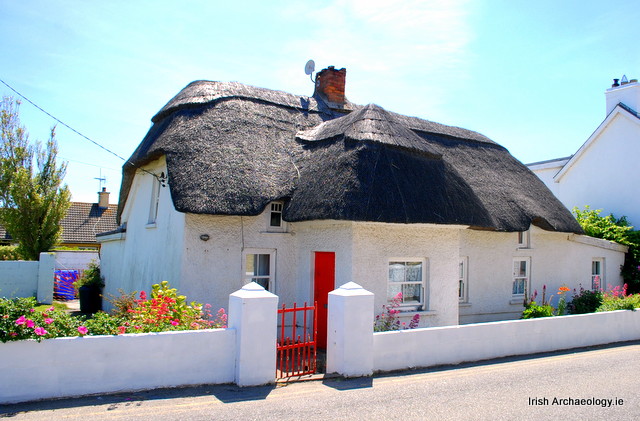

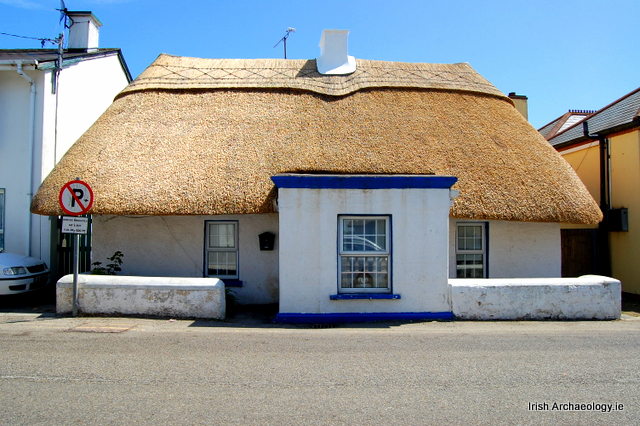

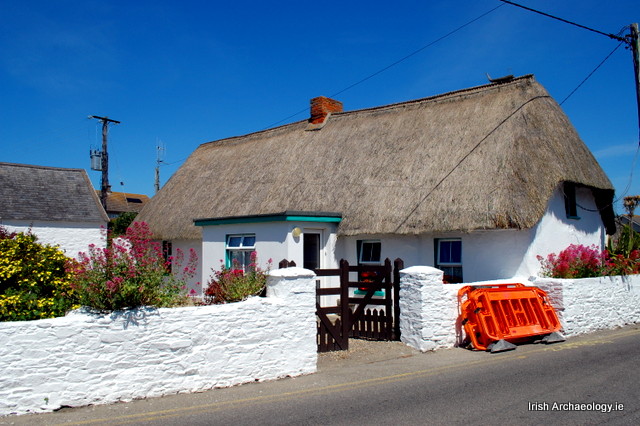

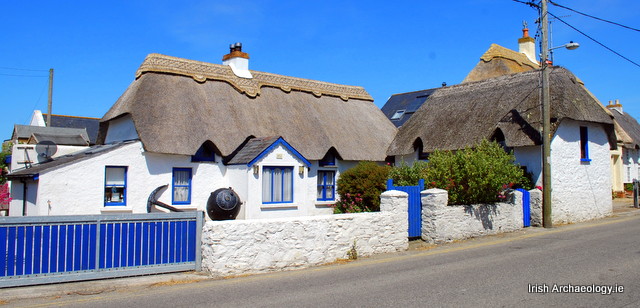




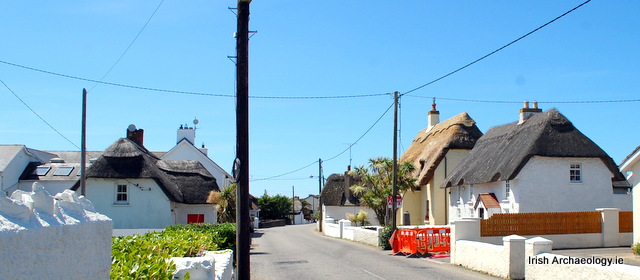



a thatcher writes…the majority of the shots show straw roofs ,oats, the ridge on the reed roofs are blockier as in the new reed roof…good photos
Lovely series of images Colm. Kilmore Quay is wonderful. It portrays a sense of time and place more than any other village I know. Its white washed walls, thatched cottages and bright colours are stunning. But for me it’s the different sizes and layout of the houses that stands out the most.
House 1 Reed roof with flush wheaten straw ridge.
House 2 reed roof with block reed ridge.
House 3 Straw roof with straw bobbin ridge.
House 4 reed roof with block reed ridge.
House 5 wheaten straw roof with flush wrap over straw ridge
House 6 Straw roof and straw bobbin ridge
House 7 Straw roof and flush straw wrap over ridge
House 8 2 x reed roofs and 1 newly finish block cut straw wrap over ridge
House 9 reed roof with worn straw ridge
House 10 worn straw thatch
House 11 reed roof with worn straw ridge
House 11 straw roof with new block cut straw ridge
Photo 12 general shot
Photo 13 boats without thatch!
Great photos , jimmy the thatcher
Hello from Boston…Would you know of anyone who is interested in renting their cottage(s) for a couple of days the beginning of August for our Irish American family of eleven…6 adults…we are the grandparents with two married children and five little grands..twins-2, 7,8,10 yrs. (two with bright red hair)
Thank you so very much,
Jean Maoney
Jeancolbath@gmail.com
I own the house in pictures 8 and 11.
I have contacted a local thatcher to tidy up the main part of the thatch and repair the ridge and I’m in a dilemma as to which ridge pattern to have! Can anyone give me any tips as to what would be the most traditional and most durable… a block cut or a flush finish?
Thanks
It’s far more complicated than flush or block. For example the simplest type of ridge is a butt up reed or combed straw ridge – theses can be flush or block in style. Quick to install and therefore should be much cheaper than other options. I would not allow a butt up ridge on my own cottage as from my experience as a thatcher they slip once the scallops are rotted thereby allowing the slow but constant ingress of water.
The other options are 1. straw wrap over ridge or 2. A straw bobbin ridge. Rather than advise you I suggest that you talk to thatched house owners and ask them for advice on which ridge worked best for them.
My own straw wrap over ridge is now 15 years done and overall in good nick.
Re the style, flush ridge with simple rodding ie 3-4 horizontal rods would be possibly more traditional as so would a bobbinbtwist ridge be more tradional.
Best of luck jimmy
Hi
I have recently bought a thatched cottage in Ballinesker. The name is The Dunes and it is right on the beach.
You can view it on http://www.shamrockcottages.co.uk/properties/wexford/curracloe-399/.
I am keen to have the thatch replaces and wondered if anyone had advise as to good thatchers in the area .
I am also keen to replicate the original ridge.
Grateful for any advise
Dee
Hi Jimmy,
I own the Cottage in picture No 10
It was in a very bad state when we bought it as you can see but we succeeded in saving it for the future.
My main comment is that Thatched Cottages are very expensive to renovate, thatch and insure. Owners, though given some small grant aid, are not supported enough to keep these beautiful homes of the past intact for the future generations.
Vonnie